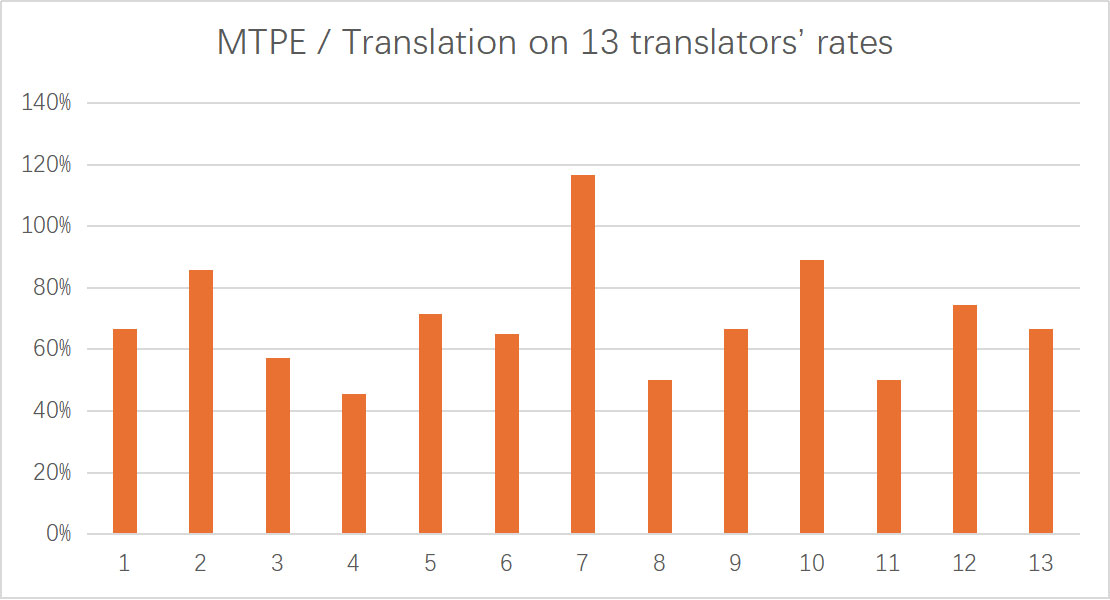
In the rapidly evolving landscape of translation technologies, Artificial Intelligence (AI) has introduced significant shifts in how translation services are rendered and priced. As AI continues to advance, particularly through the development of Translation Memory (TM), Machine Translation (MT) engines, and Large Language Models (LLMs), the translation industry stands on the cusp of transformative change. This article delves into the impacts of these three AI-driven technologies on translation costs, exploring their potential to enhance efficiency, reduce expenses, and redefine the quality and speed of translation processes.
Translation Memory has been a cornerstone in the evolution of translation technology. By storing previously translated text segments, TM allows for repeated use in new translations, reducing the need for translators to re-translate the same phrases or sentences. This not only speeds up the translation process but also significantly cuts down on costs over time. The introduction of match rates and discounts based on these rates further enhances the cost-effectiveness of TM. However, TM systems require ongoing maintenance to prevent the accumulation of errors, which, if neglected, can lead to increased long-term costs due to the need for corrections and quality control.
For instance, consider a simple sentence translated from English to Chinese: "Keep your surroundings clean." The corresponding Chinese translation might be "保持你的环境清洁。" This sentence, once translated, is stored as the format like below in the TM system.
en-US: Keep your surroundings clean.
zh-CN: 保持你的环境清洁。
The match rate is a key concept in utilizing TM. It refers to the percentage of similarity between a new text and any stored entry in the TM.
For example, if another document contains the sentence "Please keep your surroundings clean," the TM system identifies the similarity to the stored sentence. Assuming this new sentence matches 80% of the stored entry in previous example, then the match rate for the sentence would be 80%.
Similarly, the sentence "I try to keep my surroundings clean" might have a lower match rate, say 70%, due to a longer modification from the original.
Translation costs can often be calculated with discounts based on match rates. For instance, sentences with a match rate between 75% and 94% might receive a discount of 40% off the per-word rate, acknowledging that less effort is required to translate them compared to entirely new text. This discounting system incentivizes the use of TM by demonstrating cost savings directly tied to the reuse of existing translations.
Here is an example of discount rate based on match rates:
Name | TM matches | Weighted (Example) |
No matches | 0-74% | 1 |
Repetitions | Same as 0-74% | 0.15 |
Low fuzzy matches | 75-94% | 0.6 |
High fuzzy matches | 95-99% | 0.3 |
Exact matches | 100% | 0.2 |
ICE matches | >100% | 0.1 or 0 |
Over time, the use of TM can lead to significant cost reductions. For example, a client in the IT field who regularly updates manuals and reports can accumulate a vast TM database over the years. Each new document translated might utilize 50% or more content from the TM, leading to incremental cost savings. In a span of five years, such a client could reduce their translation costs by up to 30% thanks to the efficient reuse of previously translated content.
Although TM systems are beneficial, they require proper maintenance to avoid "pollution" -the incorporation of errors into the TM, which can perpetuate mistakes in future translations. The maintenance involves regular updates and reviews to ensure accuracy and relevance of the stored translations. While this involves some cost, it is minimal compared to the potential losses from polluted TMs, which can significantly undermine the cost-saving benefits by introducing errors that require correction and retranslation.
By integrating and properly maintaining a TM system, businesses and translation service providers can achieve substantial reductions in translation costs while maintaining high quality in multilingual content production.
Machine Translation with a neural machine translation software has expanded rapidly with the advent of AI. Generic MT engines like Google Translate provide accessible solutions for everyday users, while specialized MT engines offer tailored solutions that enhance translation accuracy for specific industries. The introduction of post-editing workflows where human translators refine MT outputs has proven to reduce costs significantly. Depending on the depth of post-editing required, costs can be reduced a lot compared to traditional translation methods. However, the integration of MT into professional workflows requires careful management to balance cost savings against potential quality risks.
Machine translation (MT) engines significantly impact translation costs by offering varying levels of accessibility and quality. Generally, there are two types of MT integration engines: generic and specialized.
Generic engines like Google MT are accessible to everyone and are cost-effective. They are designed for general use without specific customization. On the other hand, specialized engines are tailored to specific needs using dedicated corpora and are usually deployed privately within organizations. Although specialized engines typically offer higher translation quality than generic ones, their training and maintenance costs are considerably higher. When considering the total costs to achieve comparable quality, the difference between the two types is not substantial enough to warrant a detailed discussion here.
Post-machine translation editing is critical and comes in two forms: Full post-editing and Light post-editing. Full post-editing (Full PE) involves a comprehensive review and correction of the machine-translated text to ensure it meets high standards of accuracy and fluency. In contrast, light post-editing (Light PE) aims for acceptable quality with minimal corrections, focusing on major errors and coherence.
A survey of 13 experienced translators compared their quoted prices of Full PE to traditional human translation. Results show that Full PE prices about 70% of what is charged for a completely manual translation, suggesting a cost-saving of approximately 30% by integrating machine translation (excluding the costs of the MT itself).

Light PE prices are about half of the Full PE rate, approximately 35% of the manual translation cost, indicating savings of about 65%.
When assessing the overall translation workflow, we benchmark against the cost of pure human translation, including translation and reviewing, which we set as 100%. Regarding cost machine translation step, we set 5% of human translation cost. Here's how machine translation and its associated processes can reduce costs:
Process | Description | Total cost | Cost Saving | Quality |
Translation + Review | Pure human translation | 100% | 0 | |
Machine Translation + Full PE + Review | This process aims to match or come close to the quality of human translation, | 85% | 15% | Close to Human translation |
Machine Translation + Full PE | Without review by second translators | 60% | 40% | The risk to quality increases. |
Machine Translation + Light PE | Only have translators check the key issues | 35% | 65% | Carries a higher quality risk. |
Machine Translation | Nobody check translations | 5% | 95% | The risk to quality is significantly high |
In conclusion, machine translation offers substantial cost savings depending on the quality requirements and the specific processes adopted. It provides a scalable and economically feasible option, especially when combined with strategic post-editing practices, to cater to various translation needs while managing costs effectively.
Large Language Models, such as those developed by OpenAI, promise further revolutions in translation. LLMs can quickly generate preliminary translations and handle extensive volumes of text. Moreover, they assist translators by checking quality, extracting terminology, and even creating content in multiple languages directly. Their role in streamlining the translation process and reducing the necessity for human intervention continues to grow.
Although Large Language Models (LLMs) were initially touted for their potential to cut translation costs by up to 30%, their actual performance has not yet fully met these expectations. Let's analyze the cost-saving potential of LLMs in the translation process from three aspects:
Rapid Provision of Translations: LLMs are capable of quickly generating preliminary translations, which is particularly useful for urgently needed document processing. However, the quality of these rapid translations is not always reliable and typically requires further human revision and correction.
Handling Large Volumes of Content: LLMs excel at processing large volumes of text, especially useful for content that is voluminous and frequently updated.
Yet, this advantage does not demonstrate a significant cost-saving benefit over existing advanced machine translation technologies due to the quality issues that still require reliance on traditional machine translation as a basis. Despite the advantages in processing speed and volume, the cost savings from these features are not substantial due to quality concerns that necessitate additional human intervention.
Quality Checks: LLMs can help detect and correct errors in translations, particularly in grammar and usage. However, their instability sometimes leads to additional time spent by translators to verify and correct these outputs.
Terminology Extraction: LLMs show some capability in extracting specific domain terminologies, aiding translators in understanding and using specialized terms more quickly.
Polishing Translations: LLMs can offer suggestions for stylistic and tonal improvements, helping ensure that translations adhere more closely to target language norms.
Interpreting Original Text: For ambiguous or complex texts, LLMs can provide a possible interpretation, aiding translators in better understanding the intent of the original content.
Providing Auxiliary Translations for Reference: Translations generated by LLMs can serve as reference material, offering translators additional perspectives and comparison points.
Surveys of translators indicate that while LLMs provide these aids, their overall impact on efficiency is limited due to the technology's instability, thus these aspects do not significantly reduce costs.
Assistance in Content Creation: Technical writers or content creators can use LLMs to produce content directly in multiple languages, thereby reducing the need for subsequent translation. For example, if a writer is proficient in another language, they can utilize an LLM to generate content in that language and then make necessary adjustments.
Local Content Creation: Based on global content, local users can employ LLMs to create localized content tailored to their market, further reducing traditional translation requirements.
These methods of reducing translation needs through creation have saved clients some costs, demonstrating the potential of LLMs in the content creation field.
Large Language Models offer some potential advantages in reducing translation costs, particularly in content handling capabilities and assisting translators. However, due to the technology's instability and the competitive presence of existing machine translation technologies, the actual cost savings have not reached the initial expectations. As the technology improves and applications stabilize, the potential for LLMs to reduce costs in the translation industry may gradually become more apparent.
The integration of AI technologies into the translation industry has already demonstrated considerable cost savings and efficiency improvements. While each technology—Translation Memory, Machine Translation, and Large Language Models—brings its unique strengths and challenges, the overall trend is toward a more automated, accurate, and cost-effective translation process. As these technologies continue to develop and mature, their collective impact is likely to expand, offering even greater efficiencies and transforming the landscape of language services. The future of translation is not only about reducing costs but also about enhancing accessibility and quality for a global audience.